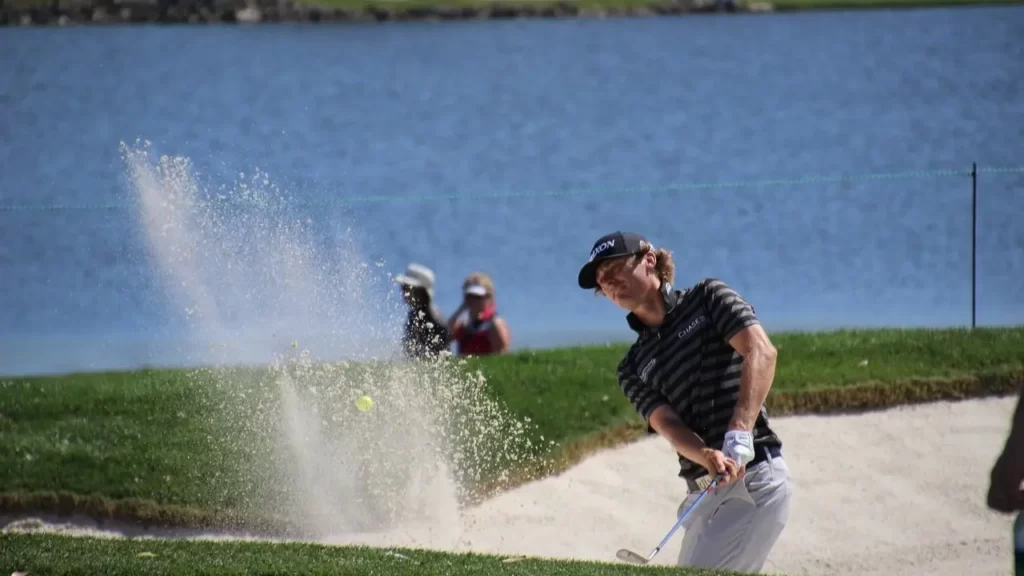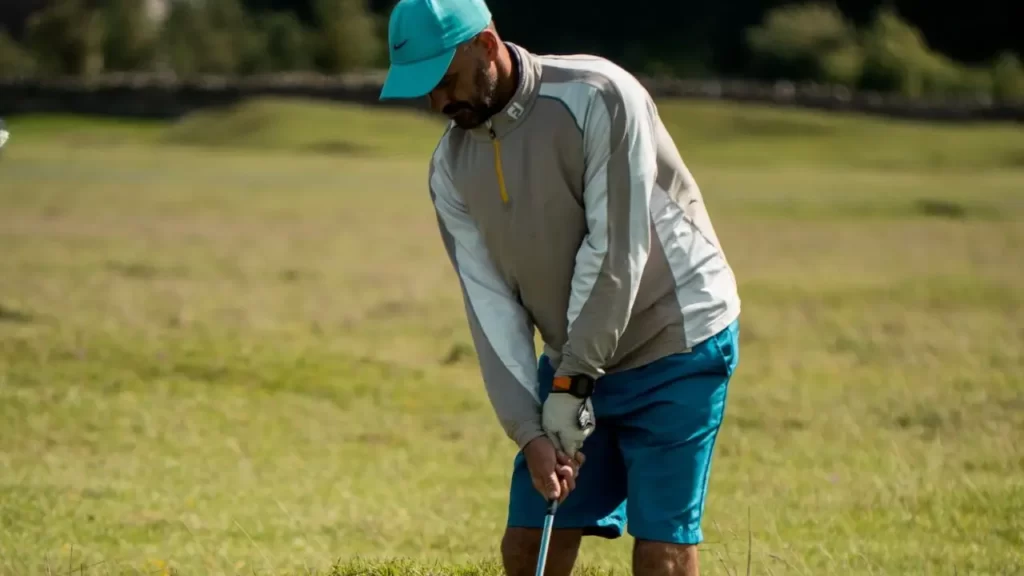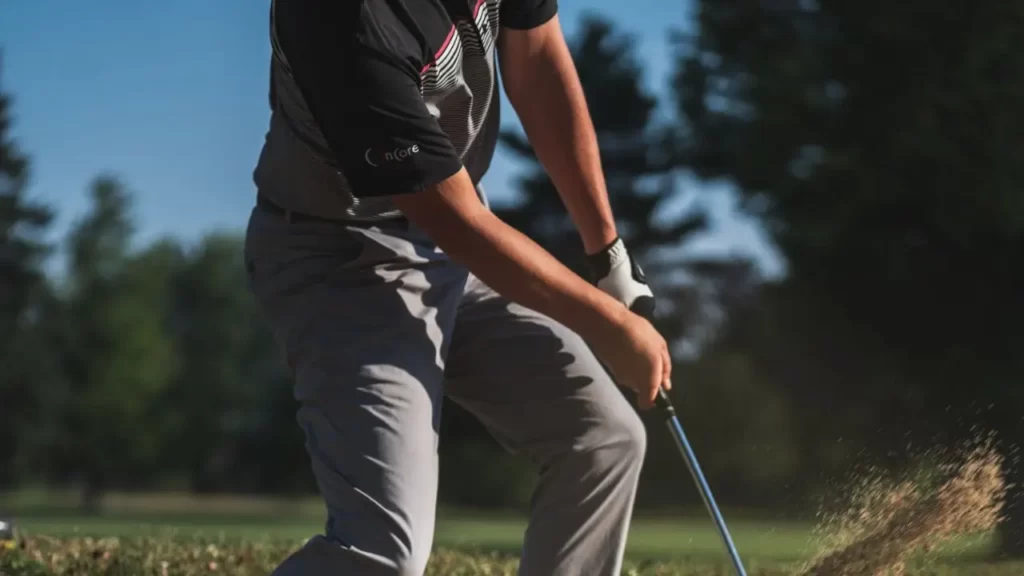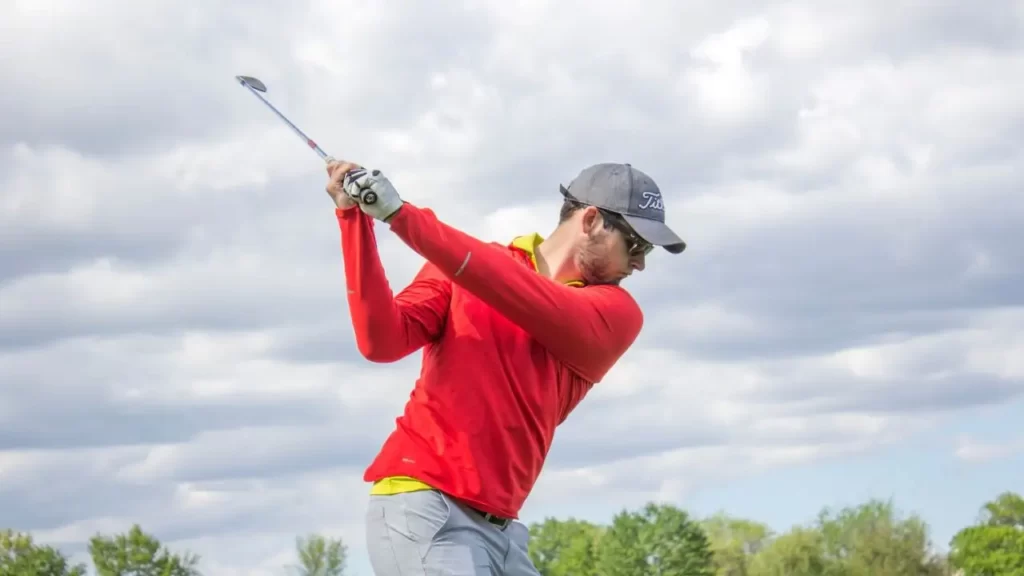Dressing for Success: Why Does Golf Have a Dress Code
- Last updated on September 9, 2023
- Toni Benedito
- Golf Courses, Blog
Why does golf have a dress code? The answer lies in its rich history and practical considerations. Golf’s dress code, dating back to 19th-century Scotland, wasn’t just about appearances. It ensured comfort and safety on the course. Over time, it evolved, adapting to golf’s popularity. Today, dress codes maintain a balance between tradition and practicality, fostering respect among players and enhancing the overall golfing experience.

Key Takeaways
- Historical Origins: Golf’s dress code emerged in 19th-century Scotland, prioritizing both tradition and practicality.
- Inclusivity and Popularity: Dress code adaptations have made golf more accessible and contributed to its rising popularity among diverse players.
- Etiquette and Respect: Adhering to dress codes promotes respect for the sport’s heritage and fellow golfers.
- Comfort and Performance: Proper attire enhances comfort, safety, and performance on the golf course.
- Future Flexibility: Golf dress codes may become more flexible, emphasizing functionality and customization for players’ needs.
Introduction
Golf is a sport that has been around for centuries, and with it comes a set of rules and traditions that have stood the test of time. One of the most well-known traditions in golf is the dress code. The dress code in golf is not just about looking good on the course; it also serves practical purposes like comfort and safety.
In this article, we will explore why golf has a dress code and what it entails. The origin of the golf dress code can be traced back to Scotland in the 19th century when golf became popular among aristocrats.
Golf courses were exclusive clubs where only members were allowed to play, and they had strict rules regarding attire. Collared shirts, button-up shirts, and slacks were mandatory for men, while women had to wear dresses or skirts that came below their knees.
"Golf boasts enduring rules and traditions. Among them, the dress code serves not just aesthetics but comfort and safety. Explore its origins in 19th-century Scotland and its role in fostering respect and tradition in the game."
This was not just a matter of appearance but also ensured that players were comfortable during their game. Over time, as golf grew in popularity, so did its strict dress codes.
Golf courses began mandating specific types of clothing, like cleats or golf shoes, to ensure the safety of players on wet grass or slippery terrain. Golfers also began wearing headgear-like visors or hats to shield them from the sun’s rays during long rounds.
Enjoying this article? Read more:
Check out this video below from mygolfspy‘s YouTube channel where they discuss whether they think golf needs such a strict dress code or not:
This was not just a matter of appearance but also ensured that players were comfortable during their game. Over time, as golf grew in popularity, so did its strict dress codes.
Golf courses began mandating specific types of clothing, like cleats or golf shoes, to ensure the safety of players on wet grass or slippery terrain. Golfers also began wearing headgear-like visors or hats to shield them from the sun’s rays during long rounds.

The Origin of the Golf Dress Code
Golf is a sport that has been played for many centuries, and it has evolved over the years into the game we know and love today. One aspect of golf that has remained relatively constant is the dress code. Golfers are required to wear certain attire when playing on the course, and this tradition dates back to the game’s early years.
In the early days of golf, players wore whatever they had on hand. There were no rules or guidelines regarding what was considered appropriate attire for playing golf.
However, as the game became more popular, courses began to impose dress codes to maintain a certain level of decorum on their grounds. The first recorded dress code in golf was implemented by The Royal and Ancient Golf Club of St Andrews in 1863.
They required all players to wear jackets and ties while playing on their course. This strict dress code was designed to uphold the club’s reputation as an exclusive venue for wealthy gentlemen.
Over time, other clubs followed suit and implemented their own dress codes. The attire required varied depending on the club’s location, clientele, and social status.
"Early golfers wore what they had, but as the sport gained popularity, dress codes emerged. The Royal and Ancient Golf Club of St Andrews set the tone in 1863, mandating jackets and ties. Clubs across regions imposed varying attire rules, from hats to shoe specifications. Today, golfers embrace this tradition, using attire not only to show respect but also for self-expression and enhanced performance."
Some clubs required players to wear hats, while others forbade them from wearing any headgear at all. As golf grew in popularity throughout Europe and North America, so did its dress codes.
Many courses adopted rules requiring collared shirts, pants, or shorts with hosiery, and appropriate shoes with non-metal spikes that wouldn’t damage the greens. The idea was not just about style but also practicality- proper clothing ensured comfort while performing outdoor activities like swinging a club.
Today, many golf enthusiasts have embraced this tradition as part of their identity within the sport. Dressing in appropriate golf gear is now seen both as a sign of respect towards other players/clubhouse staff but also as an opportunity for self-expression through color choices, favorite brands/styles fit preferences, etc. that enhance performance too!
Enjoying this article? Read more:

Understanding Golf Dress Codes
When it comes to golf, there is no bigger debate than the dress code. Some people believe that it’s just a way for golfers to show off their wealth and status by wearing expensive clothing, while others see it as a way to respect the tradition and professionalism of the sport.
However, one thing is for sure – if you’re planning on playing golf, you need to understand the dress code. Firstly, let’s discuss what not to wear on a golf course.
Jeans and shorts that are too short or torn should be avoided at all costs. Golfers should also avoid t-shirts and tank tops that show too much skin, as they’re not considered proper attire for the course.
Hats or caps with offensive language or logos are also discouraged. Additionally, footwear such as sandals or flip-flops is generally not allowed on most golf courses.
On the other hand, some items of clothing are encouraged when playing golf. Polo shirts with collars are always a safe bet; however, turtlenecks and knitwear may be deemed acceptable in cooler weather conditions.
"Offensive hats or flip-flops are a no-go. Embrace collared polo shirts and consider turtlenecks in cooler weather. Dress pants or khakis pair well. Footwear matters – sneakers or golf-specific shoes are a must. Beyond rules, dressing respectfully enhances the experience, maintains focus, and elevates performance on the green."
Dress pants or khakis typically match well with polo shirts, but shorts are allowed in certain circumstances – just make sure they comply with your club’s dress code policies! As far as footwear goes, most clubs require appropriate shoes, such as sneakers or traditional leather golf shoes designed specifically for playing.
It’s important to remember that understanding the dress code is not only about adhering to the rules but also about being respectful of your fellow players on the course. There’s no need for custom-made outfits unless you’re trying out for the PGA Tour; however, dressing neatly still shows respect for others who take their appearance seriously while enjoying recreational activities like these.
Don’t forget that dressing appropriately can also boost performance! Wearing comfortable attire that fits well can help avoid unnecessary distractions and allow maximum concentration during playtime, so you can focus purely on your game.

The Impact of Dress Codes on Golf's Popularity
Golf has come a long way from its early days when it was only limited to the elite class.
The dress code for golf has played a major role in making golf an accessible outdoor activity for everyone. Traditionally, golf was seen as a sport for the wealthy and affluent, but with the introduction of dress codes, it became more inclusive.
Golf attire is now more relaxed than ever before. Initially, polo shirts were mandatory when playing golf.
However, nowadays, a majority of golf clubs have amended their dress codes to make the game more convenient and comfortable for beginners or inexperienced players. This change in attitude towards dress codes has led to higher participation rates and increased popularity of golf.
Wearing appropriate attire not only allows individuals to play comfortably but also gives them confidence in their appearance on the green. Proper clothing improves one’s experience on the course and can even improve their game by allowing them easy movement when swinging clubs.
Enjoying this article? Read more:
Check out this video below from Mark Crossfield‘s YouTube channel where he talks about whether the golf dress code is a good or bad thing:
Hats are often worn during practice rounds or on sunny days to provide shade and protection from harsh sunlight. The trend towards casual dressing has given rise to various apparel options that cater to different preferences while still meeting requirements set by traditional golf clubs’ dress codes today.
Some institutions, like Keiser University, even offer higher education programs specifically designed for students pursuing careers in fashion design-related fields that target specific sportswear markets, such as golf apparel. Dress codes have impacted positively on the popularity of this outdoor activity sport globally over time by making it accessible to all regardless of social status, thereby promoting inclusivity overall.
Enjoying this article? Read more:

Dress Code Etiquette for Golfers
When it comes to golf, dressing appropriately is paramount. Not only will you look good and respect the sport’s heritage, but dressing correctly also promotes safety and comfort during play. Here are some dress code tips to help you stay in line with golf clothing rules:
- Breathable materials – Enhance your comfort on the golf course by selecting breathable materials such as moisture-wicking polyester, ideal for hot weather play. These fabrics prevent sweat buildup, keeping you cool during those sunny rounds.
- Light-colored clothing – When the sun is blazing, opt for light-colored clothing. Not only does this choice deflect sunlight, but it also helps prevent overheating, ensuring a more enjoyable golfing experience.
- Proper footwear – Protect the greens and improve your grip with appropriate footwear. Avoid sneakers or running shoes that can harm the course. Instead, choose cleats or spiked golf shoes, especially crucial on grassy surfaces and wet conditions.
- Comfortable socks – Don’t overlook the importance of socks. Opt for ones that rise above the ankles to enhance comfort during your rounds, providing the perfect foundation for your golf shoes.
- Sun protection – Shield yourself from direct sunlight while maintaining a clear view during swings by donning hats or visors. These accessories not only protect you from harmful UV rays but also keep your hair from interfering with your game.
- Course-specific requirements – Be aware that some golf courses may have dress code requirements that go beyond the basics. Always check with the course in advance to ensure you’re complying with their specific rules.
- Well-fitting attire – Prioritize a well-fitting golf outfit to guarantee unrestricted movement and promote optimal swing technique. Tailored outfits not only boost your style but also improve your performance on the golf course.
Following these simple dress code etiquette tips for beginners or experienced players alike will not only improve their style but will also enhance their skill level while showing respect for this beautiful game’s heritage at outdoor recreation spots or luxury golf resorts across the world!

The Future of Golf Dress Codes
As with any sport, golf dress codes have evolved over time. While many of the requirements remain the same, it is important to recognize that there are changes on the horizon. One trend that is already apparent is a move towards a more relaxed and flexible approach to golf attire.
Functionality and comfort are becoming increasingly important factors in clothing choices for outdoor sports like golf. As Keiser University’s golf team coach points out, “The focus should be on skill enhancement, not what we’re wearing.” This means that clothing rules may become more relaxed and tailored to meet the needs of individual players.
For example, trousers or shorts may be allowed to be worn depending on personal preference and weather conditions. Another significant change on the horizon for golf dress codes is an increased focus on custom outfits.
Many top-tier players already wear bespoke clothing during tournaments, but this trend could trickle down to beginners as well. Custom outfits not only enhance appearance but also provide inspiration for players looking to improve their game.
"As with any sport, golf's dress codes have evolved, hinting at future changes. A growing trend emphasizes flexibility and comfort in attire. Functionality is key, prioritizing skill over appearance. Expect relaxed clothing rules, even custom outfits for all players. Cleats may yield to sneakers. Comfort and function are gaining prominence, shifting from strict adherence to tradition."
Enjoying this article? Read more:
Cleats are another area where golf dress codes could see changes in the future. While they have traditionally been required for safety reasons, some courses now allow players to wear sneakers instead, as long as they don’t damage the green.
This trend is likely to continue as more courses prioritize player comfort over strict attire guidelines. Ultimately, while some aspects of golf dress codes may remain constant, such as collared shirts, it’s clear that there will be a continued push towards flexibility and customization in terms of what you can wear out on the course.
While adherence to traditional standards has long been a key part of golfing culture, there’s no question that these rules are starting to shift in favor of functionality and comfort. Whether you’re playing competitively or just enjoying some recreation time with friends and family out on the links, it’s clear that being comfortable while playing your best game is going to take priority over strict adherence to outdated clothing rules.
Check out this video below from Golf Pro‘s YouTube channel on the top 6 female golfers who challenged the dress code rules:
Enjoying this article? Read more:

Conclusion
The dress code in golf is a fundamental aspect of the game that has been around for centuries. From its origins in Scotland in the 15th century to today’s modern golf courses worldwide, the dress code has evolved to reflect societal changes and trends. The impact of dress codes on golf’s popularity can be seen in the way they attract a diverse range of players, from young novices to experienced professionals.
For inexperienced golfers or new starters, adhering to a dress code can seem daunting. However, following basic guidelines such as wearing collared shirts, trousers, or shorts and avoiding clothing with offensive language or images is all that is necessary to fit into the culture of golf.
Dress codes extend beyond just attire – they also govern behavior on the course. Golf college students and those pursuing higher education in golf will likely be required to adhere to strict dress codes as part of their coursework.
Dress codes are an essential part of any professional setting and help instill discipline and respect for rules and regulations. Despite some criticism of golf’s dress code policies, many argue that adhering to a specific set of guidelines can actually enhance performance on the course.
Wearing proper equipment and clothing can contribute to skill enhancement by ensuring maximum comfort and mobility during play. While some may view golf’s dress code policies as overly restrictive or outdated, they remain an integral part of the game’s culture and tradition.
As new generations discover this popular recreational activity, adherence to these policies ensures that respect for etiquette remains at its core. The evolution of dressing for recreation has led Keiser University Golf College to provide advanced training in specialist areas such as designing custom outfits needed when playing professionally, which highlights how attire continues to add value within Golf practice worldwide.
FAQs
How do you tell if a golf course has a dress code?
To check if a golf course has a dress code, visit their website or call ahead. Look for guidelines on proper attire, usually listed under “Course Etiquette” or “Dress Code.” Common requirements include collared shirts and proper golf shoes.
Why do clubs have dress codes for men?
Clubs have dress codes to maintain decorum, show respect for tradition, and ensure a certain level of professionalism. They aim to create a pleasant atmosphere for all members and guests.
What do girls have to wear on a golf course?
Girls typically wear collared shirts, comfortable pants or shorts, and appropriate golf shoes. Some courses may allow skirts or skorts, but it’s essential to check the specific dress code.
Can I wear jeans to play golf?
Generally, jeans are discouraged on golf courses as they don’t meet standard dress code requirements. Opt for khakis or golf-specific pants or shorts for a more suitable choice.
Can I wear sneakers to golf?
While some courses may allow sneakers, it’s advisable to wear golf-specific shoes with soft spikes or cleats for better traction and to protect the greens.
Can you wear tennis clothes for golf?
Tennis clothes may not meet golf dress code standards. It’s better to choose golf-appropriate attire, such as collared shirts and golf-specific bottoms.
Can you wear dress pants to golf?
Yes, dress pants are a suitable option for golf, especially if they allow freedom of movement. Ensure they align with the golf course’s dress code.
Can you wear gym shorts to golf?
Some golf courses permit gym shorts, but it’s advisable to choose golf-specific shorts for both comfort and adherence to dress code policies.
Can you wear sweatpants to golf?
Sweatpants are generally not suitable for golf due to comfort and dress code considerations. Opt for golf-specific attire for a better experience.
Can you wear chinos to golf?
Yes, chinos are a popular and acceptable choice for golf attire. They offer both style and comfort on the course.
Do you have to tuck your shirt in for golf?
Tucking your shirt in is a common requirement in golf, as it presents a neat and professional appearance. However, some courses may allow untucked shirts.
What shoes are not allowed on golf courses?
Golf courses typically do not allow shoes with metal spikes, as they can damage the greens. Always opt for golf-specific shoes with soft spikes or cleats to ensure compliance and proper course etiquette.
Share this Post
Toni Benedito
Keep Reading
Follow Us
Recent Posts

How Do Pro Golfers Get Paid? The Business of Golf
Professional golfers get paid both before and after tournaments. Before a tournament, they receive appearance fees, sometimes exceeding $1 million, to attract top players. After the tournament, earnings depend on their placement, with the PGA

How Much Do Golf Players And Pros Make? You Won’t Believe It!
Professional golfers earn substantial incomes through tournament winnings, sponsorship deals, and endorsements. Top players on the PGA Tour can make millions annually, with significant earnings from prize money and lucrative brand partnerships. For example, Rory

The Shocking Cost: How Much Does It Cost to Fly with Golf Clubs?
Flying with golf clubs can be a hassle, but it’s worth it for avid golfers. Costs vary by airline, ranging from $30 to $150 per way. Southwest Airlines offers a generous policy, allowing one set

Why Do Golfers Tape Their Fingers Before Hitting the Course?
Golfers tape their fingers to prevent injuries from repetitive motions, provide support for existing injuries, and improve grip comfort. It’s a popular technique among amateurs and pros alike, offering a lightweight and effective solution compared

How Much Does a Round of Golf Cost? Are You on Par?
The cost of a round of golf varies widely based on factors like course type, location, and time of play. Public courses typically range from $30-$100 per round, while exclusive ones like Augusta National or

Hidden Fees: How Much Does It Cost To Rent a Golf Cart
Wondering how much it costs to rent a golf cart? Explore factors like location, rental duration, and cart type impacting prices. Daily rates range from $50 to $80, while weekly rentals can vary from $200
Table of Contents







